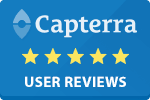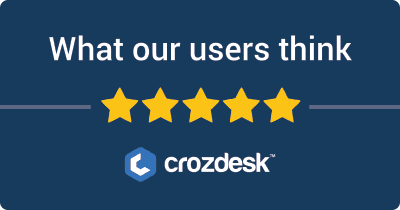
In the realm of video hosting and streaming, Loom and YouTube stand out as widely-used platforms, each serving distinct purposes tailored to different user needs.
Main Purposes:
- Loom: Primarily designed for communication and collaboration, Loom allows users to create and share on-demand video messages, tutorials, and presentations. It is favored by professionals looking to simplify remote communication.
- YouTube: A global video-sharing platform known for its vast content diversity. Users upload, share, and discover videos ranging from entertainment to educational content. It serves as a powerful tool for content creators and marketers seeking audience engagement.
Common Considerations: Users typically choose Loom for its ease of creating concise video messages and for facilitating team collaboration. YouTube, on the other hand, is often selected for its broad audience reach and monetization options for creators.
Comparison Aspects:
- Features: Consideration of video length, customization options, analytics, and integrations.
- Pricing: Evaluation of free versus paid plans and what each offers.
- Ease of Use: Assessment of the user interface and onboarding process for new users.
These key aspects will assist users in making informed decisions based on their specific video hosting and streaming requirements.
Loom VS YouTube: Which tool is the most popular?
| Tool | Number of Reviews | Average Rating | Positive Reviews | Neutral Reviews | Negative Reviews |
|---|---|---|---|---|---|
| Loom | 19 | 3.58 | 12 | 1 | 6 |
| YouTube | 426 | 2.06 | 99 | 21 | 306 |
Loom is the most popular tool based on user ratings, achieving a higher average score of 3.58 from 19 reviews. In contrast, YouTube, despite its significantly higher number of reviews at 426, has a much lower average rating of 2.06. This indicates a disparity between user engagement and satisfaction, with Loom receiving better feedback relative to its review count. YouTube has a predominance of negative reviews, totaling 306.


Loom and YouTube: Quick Comparison Overview
| Feature/Aspect | Ahrefs | SEMrush |
|---|---|---|
| Primary Features | – Site Explorer – Keyword Explorer – Backlink Checker – Content Explorer – Rank Tracker |
– Keyword Research – Site Audit – Position Tracking – Content Analyzer – Marketing Insights |
| Target Audience | – SEO professionals – Digital marketers – Agencies focusing on content marketing and backlink analysis |
– Digital marketers – SEO experts – Content marketers – Social media marketers and PPC specialists |
| Main Advantages | – Robust backlink analysis – Comprehensive keyword data – Intuitive user interface – Constantly updated index |
– All-in-one digital marketing tool – Extensive competitor analysis – Wide array of tools for SEO and PPC – Integrated social media management |
| Core Value Proposition | Focused on providing in-depth SEO insights, particularly strengths in backlink profiles and organic keyword rankings. Ideal for users prioritizing content strategy and link-building efforts. | Offers a holistic view of digital marketing, making it easier to manage all aspects of online presence through an extensive range of tools for SEO, PPC, and social media marketing. |
| Ideal Use Cases | – Conducting comprehensive link audits – Developing effective content strategies – Tracking backlinks and organic rankings – Keyword planning for SEO campaigns |
– Managing and optimizing PPC campaigns – Conducting competitive analysis for market positioning – Comprehensive content analytics and SEO tracking – Social media metrics and management |
Most liked vs most disliked features of Loom and YouTube
| Platform | Most Liked Features | Most Disliked Features |
|---|---|---|
| Loom | – Simple process for recording and sharing videos enhances productivity. | – Desire for advanced editing options, such as annotations and trimming functionalities. |
| – Facilitates asynchronous communication, allowing flexible viewing of video messages. | – Frustrations with video processing issues leading to lost information. | |
| – Quick upload and sharing capabilities provide instant accessibility. | – Automatic captioning accuracy issues could lead to misunderstandings. | |
| – Valuable for educators and trainers for creating tutorials and educational content. | – Navigational and organizational improvements needed within the platform. | |
| – Ability to organize videos into folders for structured content sharing. | – Lack of better integration with other tools and collaborative features. | |
| YouTube | – Vast content availability including tutorials and entertainment. | – Overwhelming number of ads interrupt viewing experiences. |
| – Accessibility from various devices enhances user experience. | – Perceived censorship and restrictions frustrate users. | |
| – Engagement opportunities through comments with creators and other users. | – Technical performance issues such as bugs, app crashes, and slow performance. | |
| – Entertainment value is a significant attraction for many users. | – Unclear enforcement of rules affects content creators’ satisfaction. | |
| – Allows content creators to reach audiences and monetize channels, fostering a creative economy. | – Dissatisfaction regarding the removal of features, including the dislike button. |
Key Features of Loom vs YouTube
Loom and YouTube: Key Features for Video Hosting and Streaming
Loom: Key Features and Benefits
-
Ease of Use:
- Benefit: Loom’s interface is designed for simplicity, allowing users to record their screens or webcam with just a few clicks. This ease of use is a significant advantage for professionals who need quick video communication.
- Unique Aspect: The ability to seamlessly integrate with tools such as Slack and Google Docs enhances collaboration and makes sharing videos instant.
-
Screen Recording:
- Benefit: Loom allows users to record their screens along with voice and face, making it ideal for tutorials, presentations, and feedback sessions. This helps in creating engaging and informative content quickly.
- Unique Aspect: The focus on asynchronous communication means users can convey complex information without the need for live meetings.
-
Video Analytics:
- Benefit: Users can track who watches their videos, how long they watch, and engagement levels. This data is vital for understanding audience reception and refining content.
- Unique Aspect: The level of analytics provided helps creators optimize their video content based on viewer behavior, which is particularly useful for businesses.
-
Customizable Call-to-Actions (CTAs):
- Benefit: Loom allows users to add CTAs at the end of their videos, guiding viewers on the next steps, which can increase conversion rates.
- Unique Aspect: This feature is geared towards businesses and marketing efforts, making it stand out for those looking to drive engagement.
-
Security Features:
- Benefit: Loom offers various security options such as password protection and video sharing controls, which add an extra layer of privacy for sensitive content.
- Unique Aspect: These options make Loom a preferred choice for businesses and educational institutions that handle confidential information.
YouTube: Key Features and Benefits
-
Massive Reach and Audience:
- Benefit: YouTube is the world’s largest video platform, allowing content creators to reach millions of users worldwide, providing extensive exposure and audience-building opportunities.
- Unique Aspect: The extensive user base means that creators can garner organic growth through recommendations and subscriptions.
-
Wide Range of Content Formats:
- Benefit: YouTube supports various content types, including vlogs, tutorials, live streams, and shorts. This versatility allows creators to experiment with different formats and reach diverse audiences.
- Unique Aspect: The introduction of YouTube Shorts offers a dedicated space for short, catchy videos, catering to the trend of quick content consumption.
-
Monetization Options:
- Benefit: Creators can monetize their content through ads, channel memberships, Super Chats, and merchandise shelves, providing multiple revenue streams.
- Unique Aspect: YouTube’s Partner Program allows content creators to earn significant income, which isn’t typically available on other platforms.
-
Robust Discovery Algorithms:
- Benefit: YouTube’s advanced algorithms recommend videos based on user interests, increasing the likelihood that creators’ videos are seen by potential new viewers.
- Unique Aspect: The algorithm continuously learns from viewer behavior, making it highly effective in serving relevant content and enabling creators to grow their audience base.
-
Community Engagement Tools:
- Benefit: YouTube offers features like comments, polls, and community posts, which facilitate interaction between creators and their viewers.
- Unique Aspect: This engagement fosters a sense of community and loyalty among subscribers, encouraging them to return for future content.
Conclusion
Both Loom and YouTube offer unique and powerful features for video hosting and streaming, catering to distinct audiences and needs. Loom is ideal for business-oriented video communication with an emphasis on ease of use and collaboration. In contrast, YouTube serves a broader entertainment and educational landscape, promoting extensive audience reach and diverse monetization strategies. Each platform’s unique characteristics enable users to select the right service based on their specific video creation goals.
Loom vs YouTube Pricing Comparison
| Feature | Loom | YouTube |
|---|---|---|
| Free Tier | Yes – Unlimited video recording up to 5 minutes | Yes – Unlimited uploads, monetization features available after meeting eligibility |
| Monthly Pricing | – Basic: Free – Business: $8/user/month – Enterprise: Custom pricing |
– YouTube Premium: $11.99/month |
| Annual Pricing | – Business: $96/user/year (saves $30) | – YouTube Premium: $119.99/year (saves $24) |
| Key Features | – Basic: Video recording, screen share, limited integrations – Business: Advanced features, unlimited video length, custom branding, team management tools – Enterprise: Enhanced security, detailed analytics, dedicated support |
– YouTube Premium: Ad-free viewing, background play, offline downloads, access to YouTube Originals |
| Free Trial | 14-day free trial for Business tier | No free trial, but free access to standard YouTube features |
| Educational Discounts | Not specified | Not specified, but various promotions may be available |
| Special Offers | No current promotional discounts reported | Promotions occasionally for new subscribers |
Summary of Differences:
- Focus: Loom primarily targets businesses and professionals for video communication and collaboration, while YouTube is a video hosting platform focused on content creators and viewers.
- Usage Limit: Loom has a 5-minute limit for its free tier, while YouTube offers unlimited video uploads.
- Functionality: Loom’s tiers are centered on video functionality, enhancing productivity tools for teams, whereas YouTube’s offering focuses on video consumption with user-friendly features like ad-free viewing in their premium service.
- Subscription Model: Loom operates on a user-based subscription model, making it more suitable for teams, while YouTube Premium has a more general audience appeal.
Support Options Comparison: Loom vs YouTube
| Support Option | Loom | YouTube |
|---|---|---|
| Live Chat | Available for Pro and Business subscribers only. | Not available. |
| Phone Support | Not available. | Not available. |
| Documentation | Comprehensive help center with articles covering basic to advanced topics. | Extensive help center with articles, FAQs, and guides for content creators and viewers. |
| Additional Resources | Video tutorials and community forums. Limited webinars. | Video tutorials, creator academy, and webinars offered regularly for various topics. |
In summary, Loom provides live chat for certain subscription tiers but lacks phone support. Its documentation is detailed, supplemented by video tutorials and community forums. YouTube, conversely, does not offer live chat or phone support, but boasts a vast range of documentation and various additional resources, including frequent webinars and creator-focused training sessions.
Unique Features of Loom Vs YouTube
| Feature | Loom | YouTube | Added Value | Deciding Factors |
|---|---|---|---|---|
| Video Messaging | Provides a unique video messaging interface for teams to communicate visually. | Primarily focuses on long-form content, entertainment, and creativity. | Enhances internal communication, making feedback and collaboration faster and more effective. | Ideal for workplaces needing quick visual communication. |
| Screen Recording | Allows users to record their screen along with video from the webcam. | Does not prioritize screen recording; more geared towards content creation. | Facilitates tutorials, walkthroughs, and team presentations with ease. | Beneficial for educators and trainers. |
| Library Management | Offering organizational tools specifically tailored for managing recorded messages. | Offers playlists and channels for content but less tailored for personal libraries. | Keeps video content organized for easy access and retrieval, improving productivity. | Important for users who create and manage numerous videos. |
| Video Reactions | Users can leave time-stamped reactions and comments on specific moments in videos. | Limited interaction features that do not include time-stamped comments. | Promotes engagement and provides specific feedback within the context of the video’s content. | Crucial for collaborative team environments. |
| Call-to-Action Buttons | Integrates customizable calls-to-action within the videos. | Primarily focused on content discovery and monetization rather than direct actions. | Encourages viewer interaction and can drive specific business or learning outcomes. | Essential for marketing and educational goals. |
| Viewer Analytics | Provides in-depth viewer engagement analytics tailored for internal communication. | Offers extensive analytics for public content but not specifically for teams. | Enables teams to assess how content is received and identify areas for improvement. | Important for businesses tracking internal communication effectiveness. |
| Simplicity of Use | Designed for easy sharing and quick use within professional settings. | More complex due to public content creation and monetization features. | Reduces the learning curve for new users, allowing quick adaptation and usability. | Ideal for non-technical users or small teams. |
| Integration | Seamless integration with tools like Slack, Google Workspace, and Microsoft Teams. | Limited integration with business tools; focused on social media and external platforms. | Facilitates a smoother workflow by connecting with tools frequently used in day-to-day operations. | Critical for organizations using various collaboration tools. |
The unique features of Loom, such as video messaging and screen recording, cater specifically to team collaboration and internal communication. In contrast, YouTube specializes in entertainment and content discovery, making it better suited for public video sharing. These distinctive offerings from each platform provide added value that can significantly influence the choice between them based on user needs and objectives.


